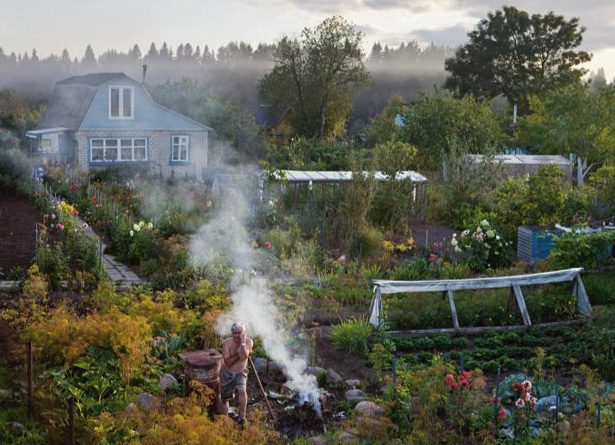While many in the world are completely dependent on large scale agriculture, the Russian people feed themselves. Their agricultural economy is small scale, predominantly organic and in the capable hands of the nation's people. Russians have something built into their DNA that creates the desire to grow their own food. It's a habit that has fed the Russian nation for centuries. It's not just a hobby but a massive contribution to Russia's agriculture.
In 2011, 51% of Russia's food was grown either by dacha communities (40%), like those pictured left in Sisto-Palkino, or peasant farmers (11%) leaving the rest (49%) of production to the large agricultural enterprises. But when you dig down into the earthy data from the Russian Statistics Service you discover some impressive details. Again in 2011, dacha gardens produced over 80% of the countries fruit and berries, over 66% of the vegetables, almost 80% of the potatoes and nearly 50% of the nations milk, much of it consumed raw.
While many European governments make living on a small-holding very difficult, in Russia the opposite is the case. In the UK one councillor's opinion regarding living on the land was, “Nobody would subject themselves to that way of life. You might as well be in prison”; tell that to a nation of gardeners living off the land.
During the communist period school children were obliged to visit their local farms to get hands-on experience harvesting food (below left) at a time when about 90% of the nation's food came from dacha gardens. During the same period every child would be expected to play their part in growing the family's food from their small patch of Russia.

